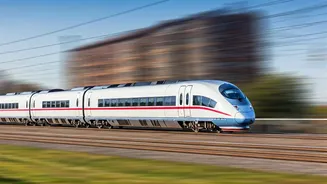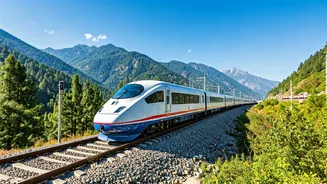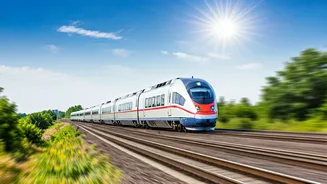Defining Architectural Grandeur
The world's highest bridge showcases the pinnacle of modern engineering, a striking example of human achievement. Bridges of this scale are not merely
functional; they symbolize human aspiration. These structures represent the triumph of engineering skill, innovative design, and overcoming difficult geographical challenges. Building such a bridge requires advanced technologies, careful planning, and a deep understanding of materials science and structural mechanics. The construction process includes complex elements like foundation work, cable systems, and meticulous alignment, all to ensure both stability and longevity. The very existence of this bridge speaks to a society’s capacity to push boundaries and pursue ambitious goals.
Challenges in Construction
Building the world's highest bridge presented a multitude of significant challenges. The harsh environments often found in high-altitude locations create considerable hurdles. Extreme weather conditions, including strong winds and frigid temperatures, can disrupt construction schedules and endanger workers. Furthermore, the selection of appropriate materials is crucial, as the bridge must withstand substantial loads and stresses. The integration of advanced construction techniques is essential to address the complex requirements, such as using specialized equipment and employing expert engineers and construction crews. Overcoming these hurdles reflects the collaborative nature of large-scale engineering projects and showcases human resilience and ingenuity.
Design and Engineering
The design and engineering of the world’s highest bridge are extraordinary, combining innovation and precision. Engineers utilize complex computer modeling and simulations to analyze structural integrity and ensure the bridge's safety and stability. The choice of materials, often high-strength steel or reinforced concrete, plays a crucial role in the bridge's ability to resist extreme forces. Cable-stayed or suspension bridge designs are frequently employed, leveraging the advantages of these designs to span vast distances and support heavy loads. Every component, from the foundations to the deck, undergoes detailed calculations, meticulous engineering, and rigorous testing. These considerations ensure the bridge meets safety standards while also contributing to its aesthetic appeal and functionality.
Impact on Connectivity
The world’s highest bridge significantly improves connectivity and accessibility for people in the surrounding areas. By traversing difficult terrain, the bridge facilitates transportation of goods, services, and individuals, fostering economic growth and social integration. Reduced travel times and easier accessibility can open doors for business ventures. The improved connectivity enables efficient movement and communication, which improves the quality of life. Accessibility also extends to areas that were once difficult to reach, enhancing tourism opportunities. The resulting economic growth can lead to enhanced infrastructure, education, and healthcare facilities. These bridges can represent a significant investment in infrastructure, providing a lasting impact on society.
Future of Bridges
The construction of the world's highest bridge indicates exciting trends in bridge engineering. Advancements in materials science and construction techniques are consistently pushing the boundaries of what is possible. Engineers continually explore innovative designs that maximize efficiency, durability, and sustainability. The use of data analytics and smart technologies can allow for improved monitoring and maintenance, extending the lifespan of these structures. Sustainable construction practices are growing in importance, focusing on minimizing environmental impact and improving resource efficiency. As we look ahead, the future of bridge engineering promises more ambitious projects, greater resilience, and a deeper integration of technological innovation, reshaping the world.







